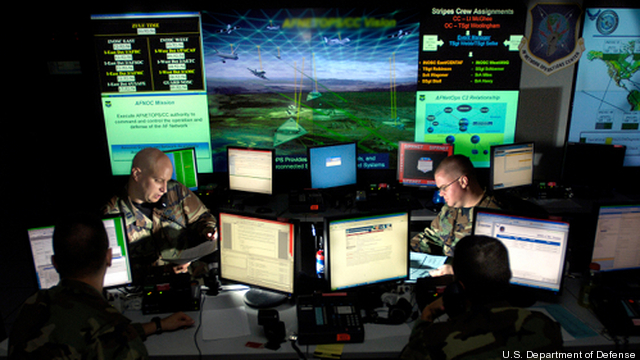DoD Flies Blind In Cyber Spending: GAO
Posted on
 Washington: The Defense Department’s highly-anticipated cyberwarfare strategy is finally in place. All the Pentagon has to do now is figure out how to pay for it.
Washington: The Defense Department’s highly-anticipated cyberwarfare strategy is finally in place. All the Pentagon has to do now is figure out how to pay for it.
That won’t be easy because DoD and the services are flying blind as they race to put dollars behind the department’s new strategy, according to a new Government Accountability Office study.
The department’s new cyber strategy provides the overarching outline for how the U.S. military’s growing cadre of cyberwarriors will fight in the future. But the nuts-and-bolts details needed to put a price tag on those operations simply are not there, according to a recently released Government Accountability Office report.
“Department officials stated, and our work confirmed, that since clear cyberspace operations definitions for budgeting purposes do not exist, there can be significant variations in the elements each organization includes in its budget estimate,” according to the report.
The department also continues to lack a “designated focal point or methodology for collecting and compiling budget information on full-spectrum cyberspace operations,” the report adds.
The creation of Cyber Command did give DoD and the services a central place to run both defensive and offensive cyber operations, according to the report.
But without a way to corral the myriad program and funding requests being pumped out by the services and DoD, the command will not have the right tools to do their job.
To square both problems, GAO suggested the department’s policy shop, Joint Staff and Cyber Command draft a new cyber budget plan, “identifying specific activities and program elements” that will drive DoD requirements, department-wide.
To guide that process, the department should designate a shop within DoD to act as the focal point, the report states.
Teri Takai, acting assistant secretary of defense For networks and information integration, said the budget plan should not be limited to department’s policy shop, but a cooperative assessment with input from all components tied to cyber operations.
In addition, the new cyber budget office cannot be limited to only the Pentagon, but must be in conjunction with the director of national intelligence, Takai added.
But with a military trying to bounce back from two wars, it may take more than a new buying plan and panel to get the Pentagon what it needs for cyber operations.
With the Obama administration’s plan to shave $400 billion from DoD coffers, plus the proposed cuts included in the new deficit reduction compromise between the White House and the Hill last night, the department could be staring down a nearly trillion dollar cut in spending — but no one really knows how much those cuts could total out to.
And with readiness concerns, a struggling Navy fleet and trying to get the Pentagon’s most expensive acquisition program in history off the ground, it remains to be seen if DoD’s cyber priorities can make the cut.
Subscribe to our newsletter
Promotions, new products and sales. Directly to your inbox.
